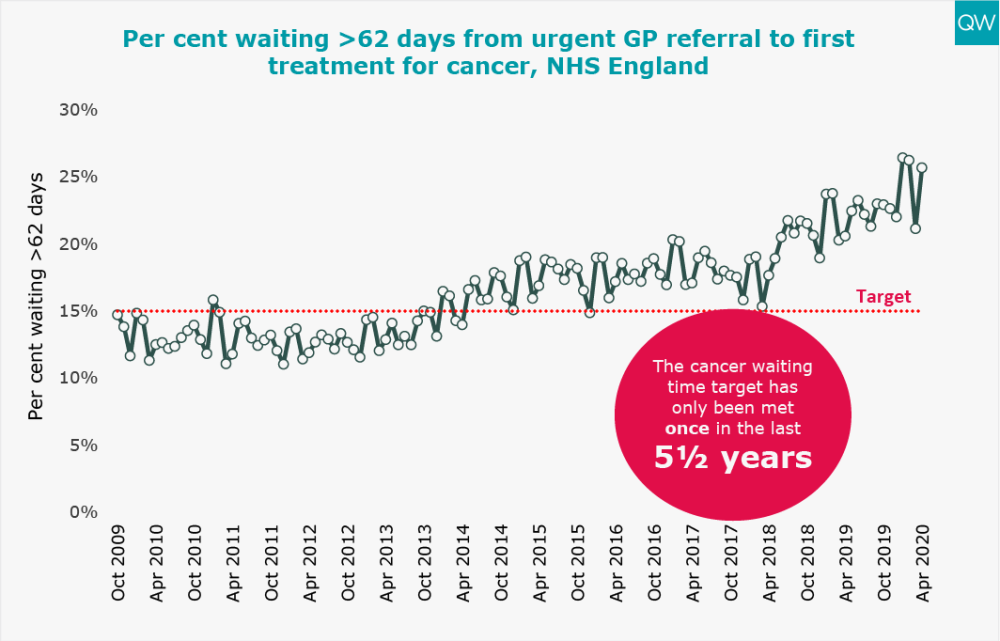Today, NHS England published the latest data on key performance measures for April and May of this year. Here we show some of these statistics and how they compare with previous years.
During this unprecedented time for the health service, QualityWatch will continue to provide independent scrutiny of the health and social care system as far as possible. The most recent data published today reflects dramatic changes in access and service use as a result of the coronavirus (Covid-19) outbreak. In light of these shifts in activity, we have changed the presentation of some of our usual charts, to aid interpretation. It is also worth noting that NHS England have suspended data collection from 1 April to 30 June 2020 for some of their performance statistics, including delayed transfers of care.
In March 2019, the Clinically-Led Review of NHS Access Standards Interim Report was released, proposing some significant changes to many of the targets reported on here. A six-month Progress Report from the NHS Medical Director was also published in October 2019. Field testing of the proposed new standards began in 2019, however due to the coronavirus (Covid-19) outbreak, the publication of the review’s recommendations has been delayed until later this year.
For urgent and emergency care, the field test sites have not been submitting four-hour performance data since May 2019. The time series presented here excludes the field testing sites and so is comparable across months and years. For elective care, performance of the field test sites will continue to be included in the national time series, so the data is fully comparable over time.
For interactive charts showing the quality of health and social care over time, please refer to our 200+ indicators.
A&E
- In May 2020, there were 1.3 million total A&E attendances – 42% lower than May 2019 but 38% higher than April 2020 (which saw the lowest level of attendances since records began).
- There was an average of 40,704 total A&E attendances per day in April 2020. This is 42% lower than in May 2019.
- In May 2020, there were 924,215 type 1 A&E attendances – 33% lower than in May 2019 but 34% higher than in April 2020.
- Emergency admissions via A&E have generally been increasing year-on-year, but fell dramatically in April 2020. In May 2020, there were 312,719 emergency admissions via A&E – 24% lower than in May 2019 but 21% higher than in April 2020.
- In May 2020, 6.5% of people attending A&E spent more than four hours from arrival to admission, transfer or discharge. After increasing to the worst level on record in December 2019, there has been an improvement in waiting times over the last five consecutive months.
- 13,457 patients spent more than four hours waiting on a trolley from a decision to admit to admission in May 2020 – 78% lower than in May 2019.
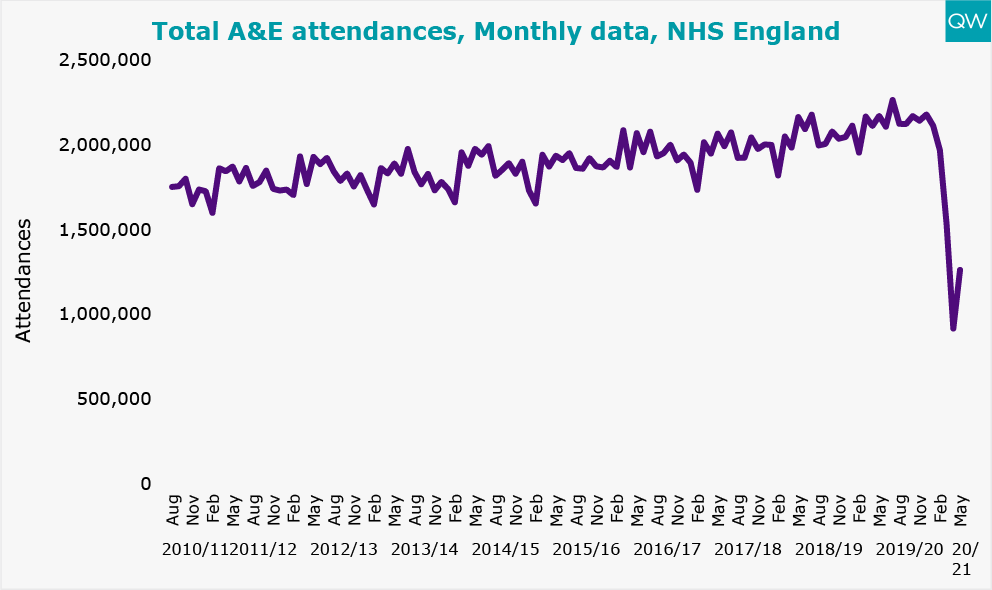
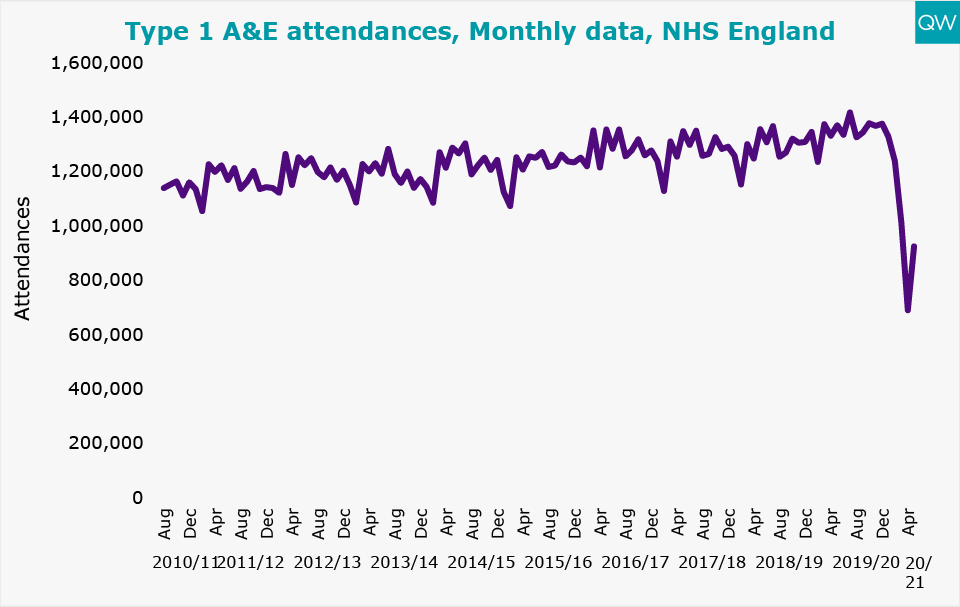
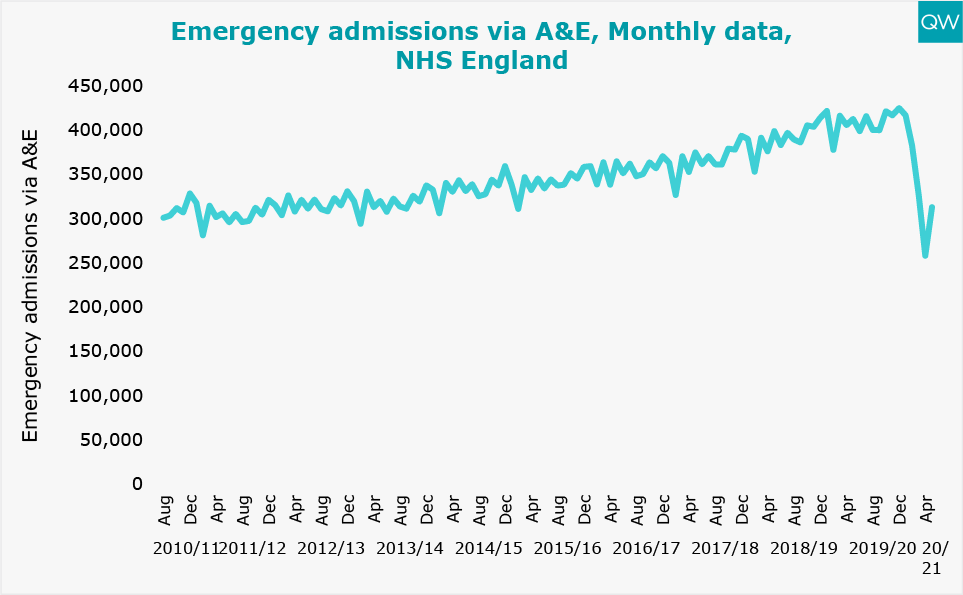
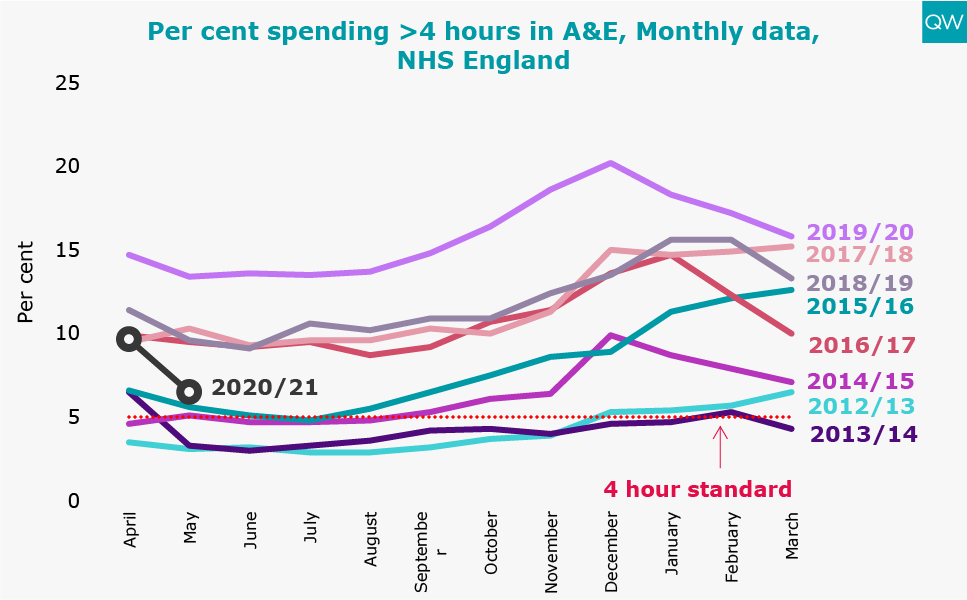
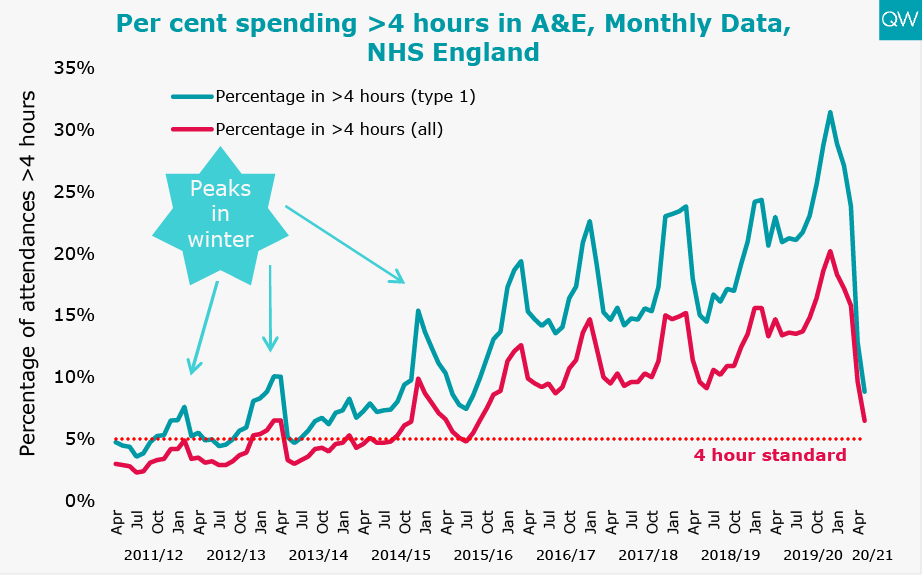
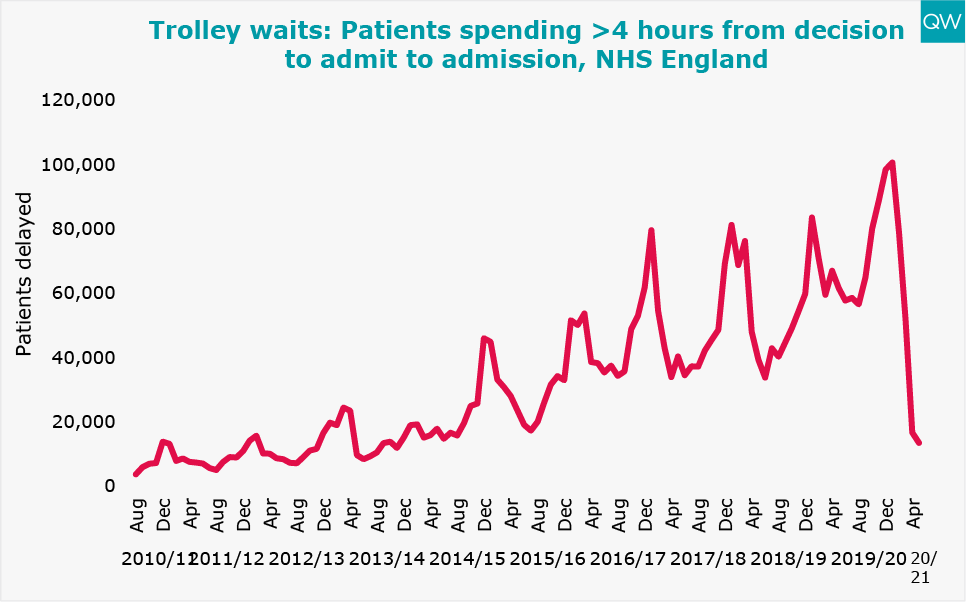
Ambulance response times
- Following a worsening in ambulance response times in March, the average response time for Category 1 (life-threatening) calls improved to 6 minutes 34 seconds in May 2020. There were 23% fewer Category 1 incidents in May 2020 compared to May 2019.
- The average response time for Category 2 (emergency) calls was 13 minutes 28 seconds in May 2020. This came alongside a 16% fall in Category 2 incidents compared to May 2019. This is the first time the Category 2 average response time target of 18 minutes has been met since its introduction in April 2018.
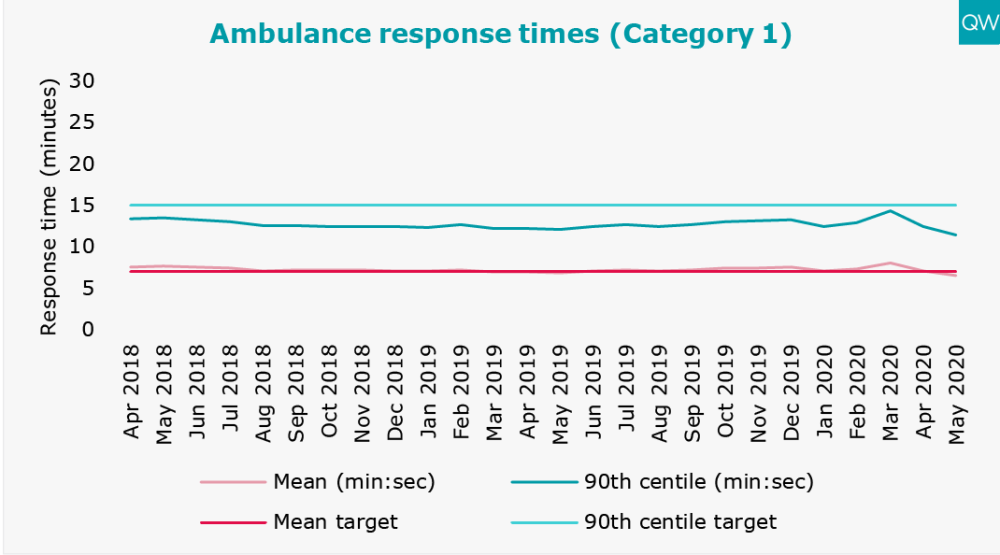
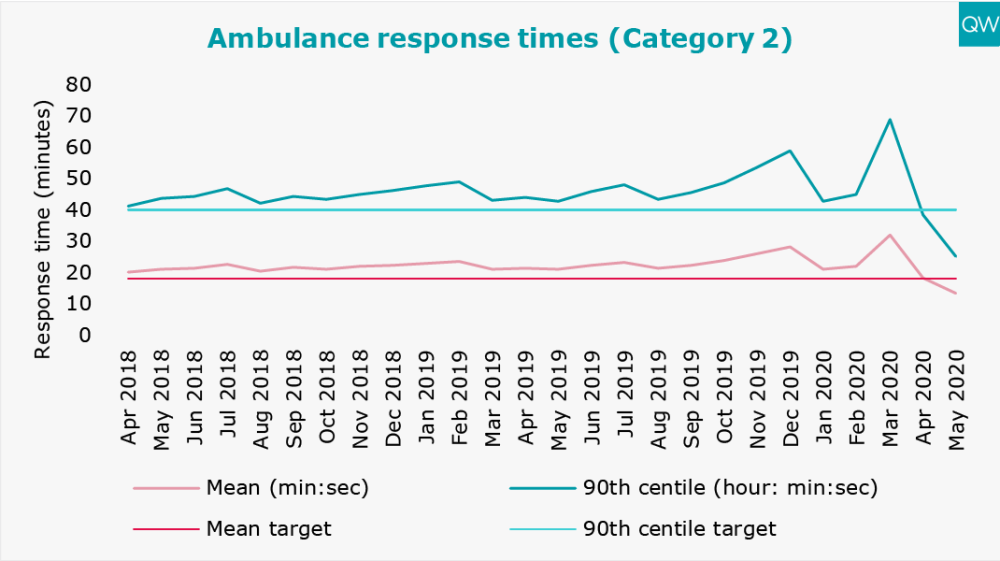
Treatment and diagnostic test waiting times
- The total number of people waiting to start consultant-led elective treatment fell to 4 million in April 2020 (reported waiting list plus the estimate of missing data). Although outpatient and elective inpatient activity dropped in April, there was a larger drop in GP referrals, resulting in an overall reduction in the waiting list.
- The proportion of people waiting over 18 weeks to start elective treatment reached 29% in April 2020. The 18-week target has not been met for over four years.
- In April 2020, 56% of patients had been waiting over six weeks for a diagnostic test. This is the worst performance since records began and the diagnostic waiting time target has not been met for over six years.
- The number of diagnostic tests carried out fell dramatically in April 2020 to 612,641 – 68% lower than in April 2019.
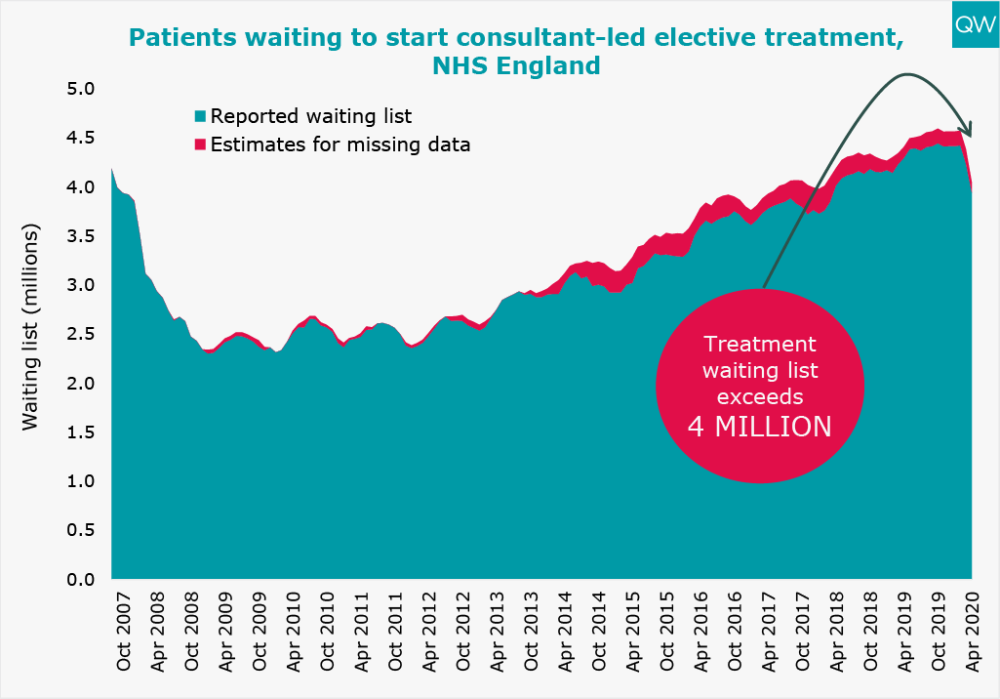
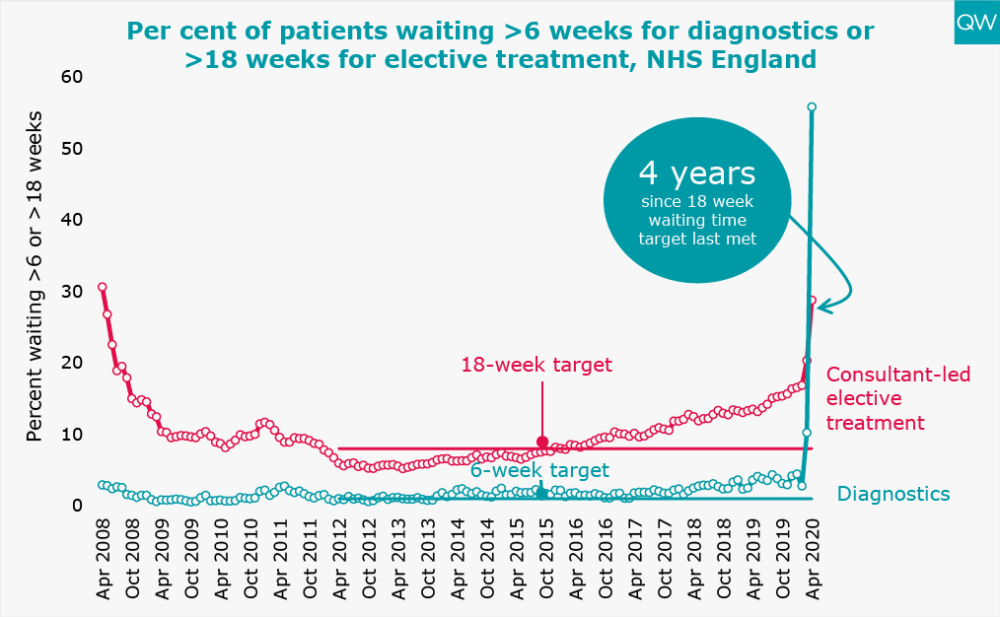
Cancer waiting times
- In April 2020, over one in four patients (26%) waited longer than two months to start their first treatment for cancer following an urgent GP referral – the worst performance for any April since records began.
- The 62-day cancer target has not been met for over four years.
